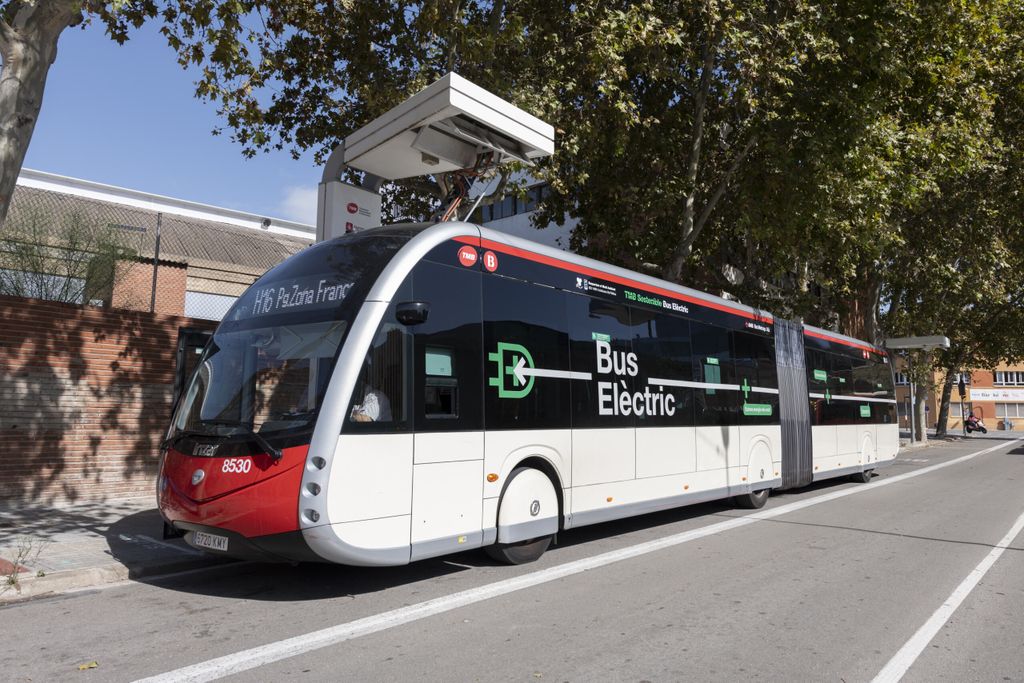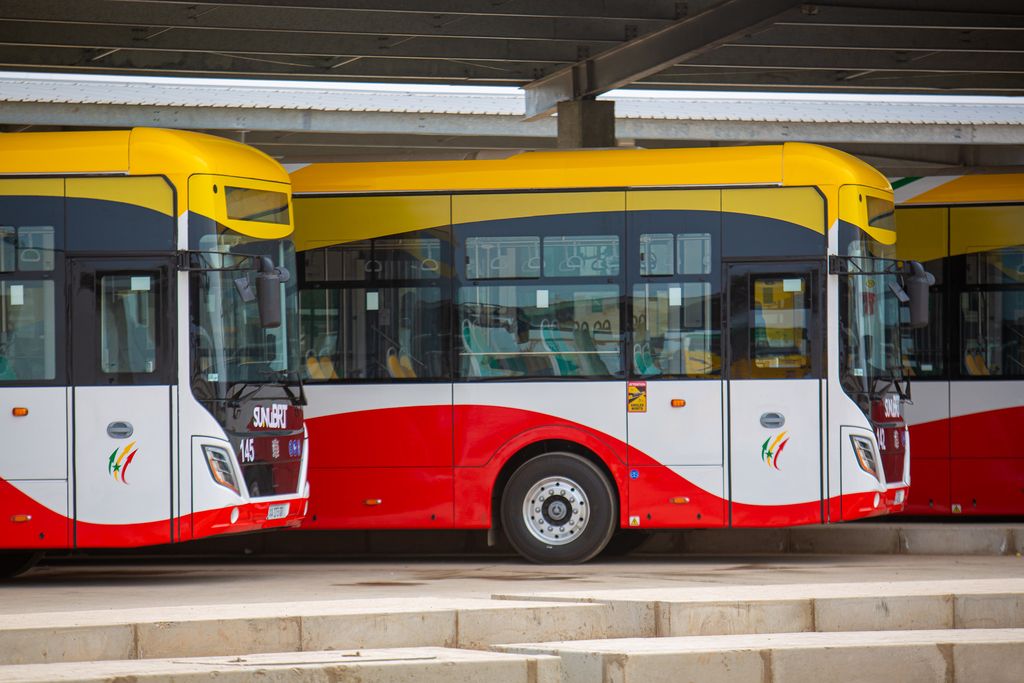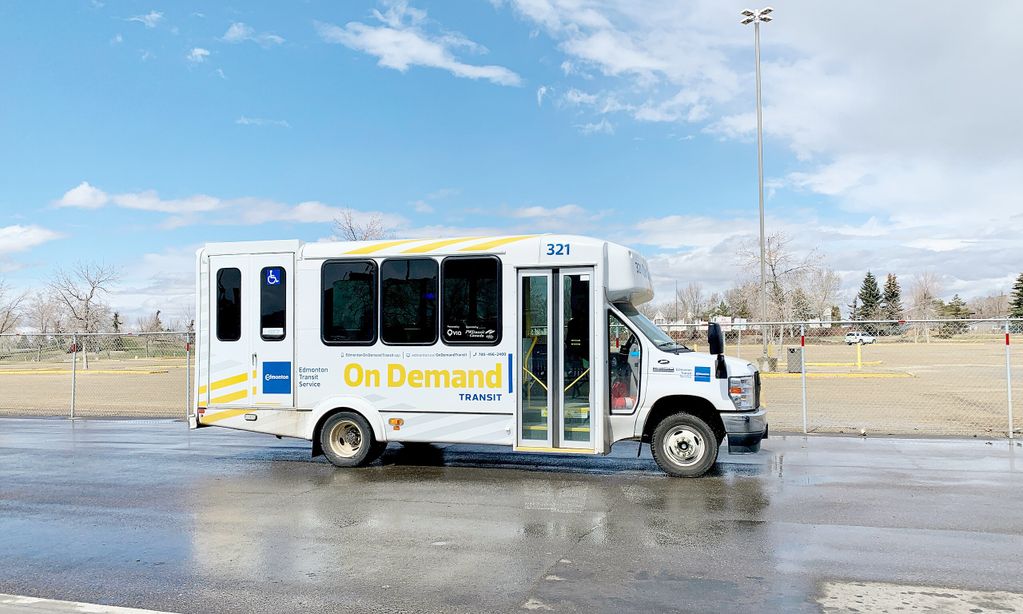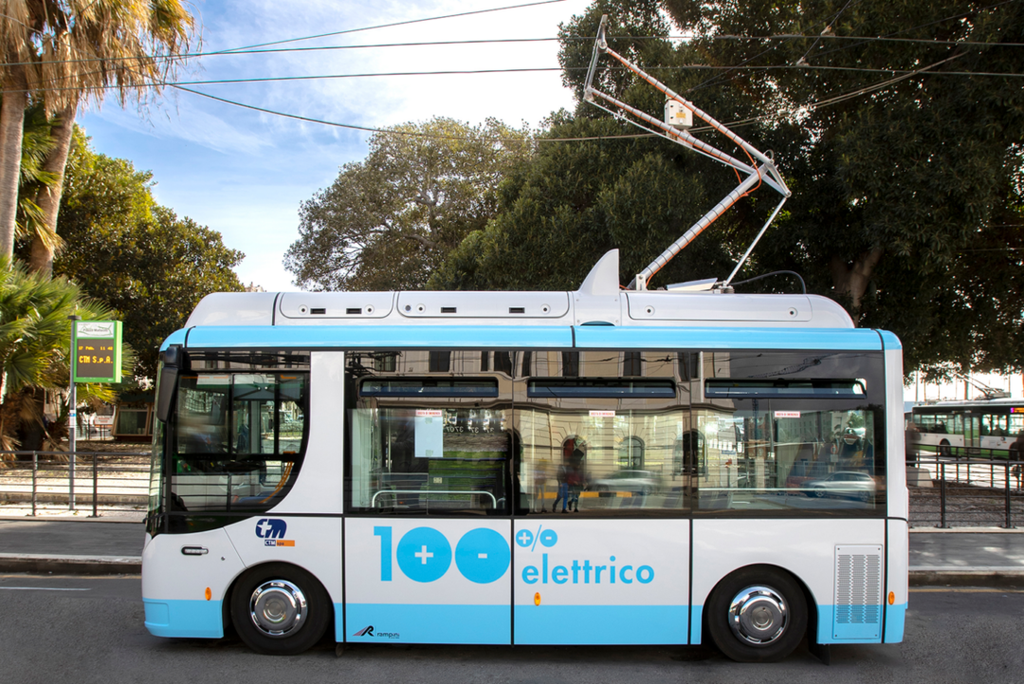
Why BRT and electric buses are a key congestion solution for MENA
Tackling congestion in MENA
The Middle East and North Africa (MENA) region is known for its bustling cities and fast-urbanising populations. However, the region faces the significant challenge of congestion. In fact, the knock-on effects of bad traffic can be drastic. According to Kamal ElSoueni from Rabbit Mobility, a micromobility operator based in Cairo, the time that Egyptians spend in traffic equals a 12% loss in potential earnings.
With that in mind, as urban areas expand, the need for effective – and sustainable – congestion solutions becomes increasingly critical. To solve this, and move MENA forward, two things stand out: Bus Rapid Transit (BRT) and electric buses.
- What is BRT?
Bus rapid transit (BRT) systems consist of large buses that run on dedicated lanes and stop at well-defined stations, and include a technology that enables passengers to pay before boarding.
- What are the benefits of electric buses?
Electric buses do not produce emissions at tailpipe and are quiet. This enhances health and quality of life in urban centres.
A gamechanger in public transport
BRT systems offer an efficient service thanks to their dedicated lanes and infrastructure. They have revolutionised public transport in cities across the globe. For example, in Bogotá, Colombia, BRT buses have an average speed of 26km/h, which is 10km/h faster than the average city bus. In the MENA region, BRT has yet to see wide-scale deployment. But attention is growing as operators and authorities realise that BRT presents an opportunity to streamline urban travel, reduce delays, and enhance the overall passenger experience.
One of the key benefits of BRT is that, for cities without a large, existing rail or metro network, BRT can be a congestion solution that is faster to implement. Indeed, provides an effective alternative to the private car. Given the chronic traffic congestion levels in many MENA cities, running standard bus services in mixed traffic conditions would result in greatly reduced service levels, and not be of benefit to the passengers. Therefore, BRT systems can provide a robust solution.
In addition, BRT has great potential when it comes to safety and inclusion. One study found that nearly half of women in Jordan have refused a job offer due to either the unavailability or poor connectivity of local public transport. In short, improving accessibility leads to equity.
When it comes to advancing BRT, UITP coordinates the eBRT2030 project, which is studying and advancing the implementation of BRT systems worldwide. eBRT2030 engages with public transport organisations globally. For instance, the project’s Future eBRT Cities user group includes Amman, Jordan, as well as Dakar, Senegal and Montevideo, Uruguay, among others.
Sustainable and efficient
BloombergNEF estimates that electric buses are set to reach a 50% global market share by 2032, overtaking all other types of electrified vehicles. These buses are not only environmentally friendly, reducing greenhouse gas emissions and pollution, but they also offer operational efficiencies as seen in the table below. The adoption of electric buses in MENA’s public transport can be a significant step towards sustainable urban development.
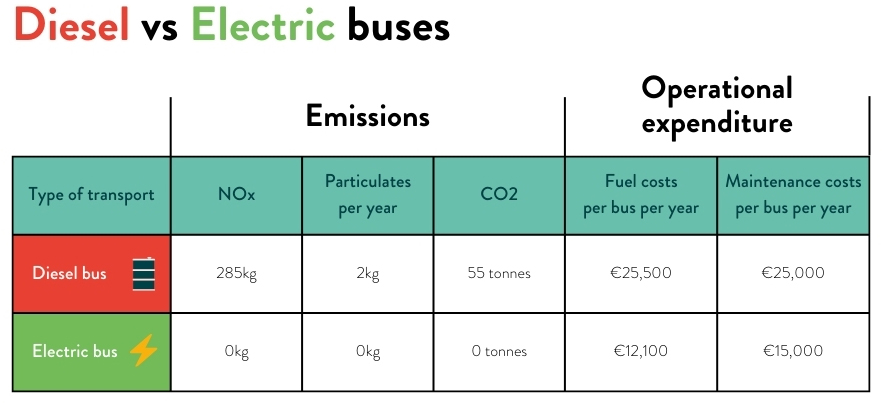
Real-world examples
BRT systems are receiving renewed attention in the MENA region. In particular Amman, Jordan, as highlighted in UITP’s 2021 MENA Transport report. Amman has one of the region’s largest BRT networks with a length of around 17km. What’s more, Amman also boasts the highest bus ridership in the MENA region with 331 million passengers annually, which is similar to the levels seen in Berlin. In short, build it and they will come!
With this all said, building a BRT network is just one part of the puzzle. Indeed, BRT and electric buses do best when it is a part of a wider strategy and an integrated public transport network.
In Amman, The Transport & Mobility Master Plan was launched in 2010, which plans to increase the modal share of public transport from 13% to 40% by 2025. The BRT finally started up in July 2021, quickly attracting an average daily ridership of 10,000 passengers. And now, the system is ramping up to an eventual targeted capacity of 315,000 passengers per day. Though this target takes investments, namely to reroute and divert traffic, for example by constructing tunnels and bridges, as well as enforcing fines and traffic laws to ensure correct traffic segregation.
This pioneer project in the region can be used as a fitting case study for other authorities and operators planning to implement BRT systems in the MENA region. In fact, many cities in MENA countries have ongoing BRT projects:
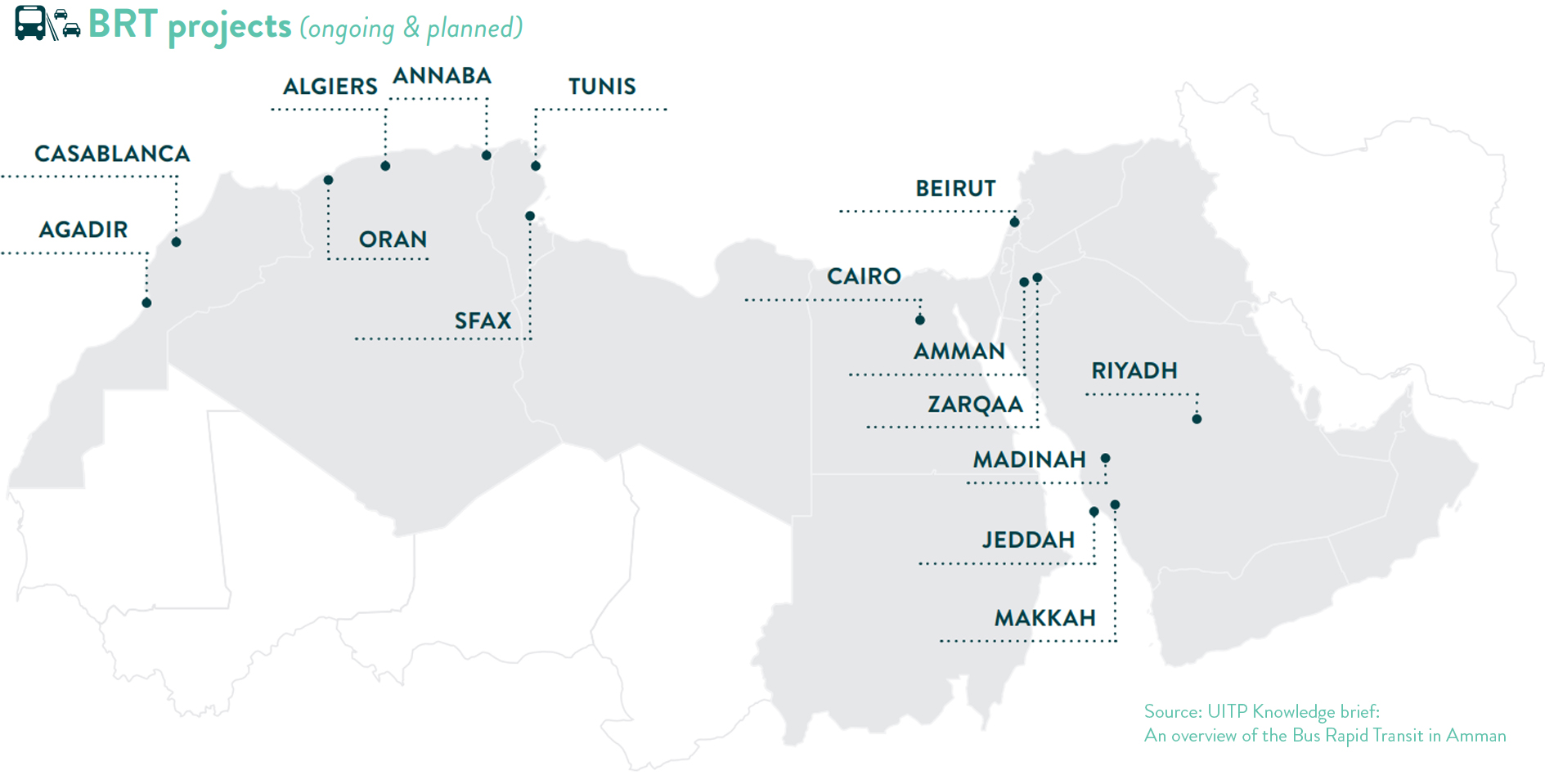
Sustainable mobility and wellbeing
Let’s celebrate MENA mobility.
The future of public transport in the MENA region is not just a story of infrastructure and technology; it’s a narrative of empowering communities and moving cities forward. As we look towards the future, the MENA region is poised to set a global example in sustainable, efficient, and inclusive urban mobility.
Want to discover more? The MENA Transport Congress and Exhibition 2024 is the leading event for sustainable urban mobility solutions in the MENA region, taking place in Dubai from 28 February to 1 March 2024.
exclusive resources

